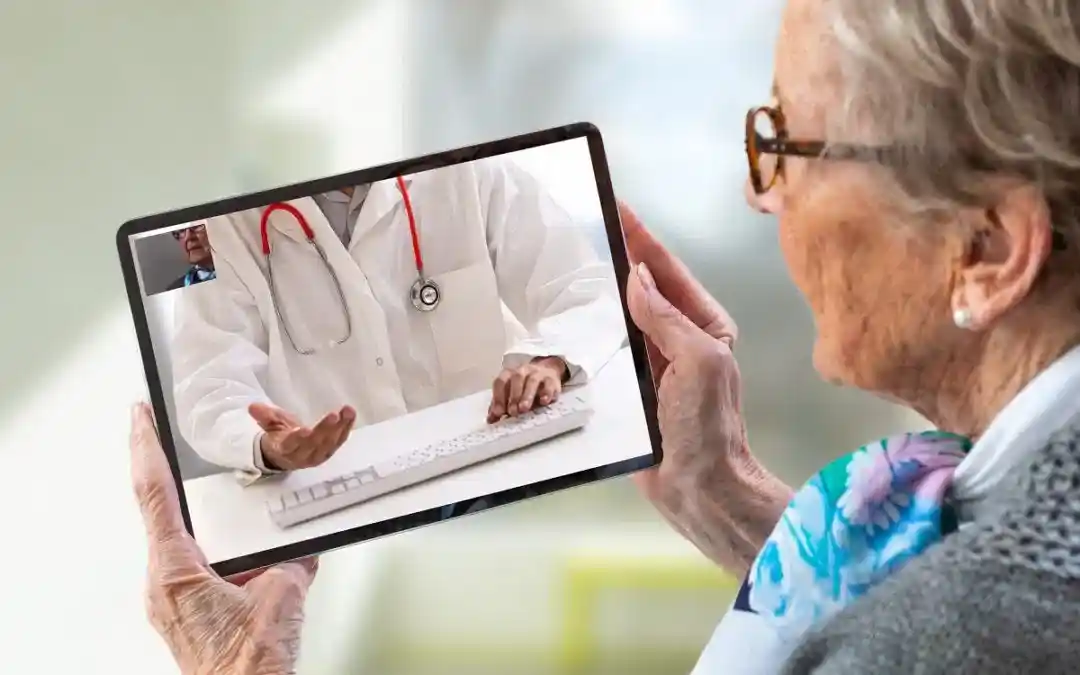What’s the definition of telehealth, and how is it different from remote patient monitoring?
Telehealth. Telemedicine. Virtual care. Remote patient monitoring. Many of these terms have become household words in the United States. But what do they really mean, both in the literal and clinical sense? What’s the definition of telehealth, and what technology is it based upon? Are other forms of digital care like remote therapeutic monitoring and remote patient monitoring considered telehealth?
As technology has developed over the past decades, that innovation has been increasingly harnessed to improve care delivery, with more technology-based patient care interventions emerging to make use of them. The nature of this technology and the way that it’s used has changed over time, too, evolving to reflect best practices and new models of CMS reimbursement.
With that in mind, it’s a good idea to take a step back and start at the start with the definition of telehealth, telemedicine, remote patient monitoring and other commonly used terms for digital healthcare services.
What’s the definition of telehealth and telemedicine?
Telemedicine and telehealth are synonymous terms, referring to the same thing — the “use of telecommunications and information technology to provide access to health assessment, diagnosis, intervention, consultation, supervision and information across distance,” as the U.S. Centers for Medicare & Medicaid Services (CMS) defines telehealth.
The key phrase here is “across distance.” Telehealth refers to care that mostly takes place with the patient in a different location than the doctor and care team. Initially, there were strict rules that care had to be initiated in person, with the patient and physician in the same physical location, but those types of restrictions have been eased in the wake of the COVID-19 pandemic.
Because it’s delivered over a distance, telehealth is also called remote care. Because it usually involves the use of “virtual” technology — really just a reference to videoconferencing, which lets patients and caregivers have “virtual” meetings and conversations — it’s sometimes called virtual care. And because it uses digital technology, telehealth is also frequently referred to as digital care or digital healthcare.
What technology is telehealth/telemedicine based upon?
Services that are considered telehealth and telemedicine are based upon a few different types of technology: virtual visit technology, remote monitoring devices and platforms, and patient and clinician interfaces. Let’s take a closer look at each type of telehealth technology.
Virtual visit/video equipment and software
Though it sounds ultra-high-tech, “virtual visit” is really just referring to videoconferencing, or the interaction between patients and their doctors and/or care teams through computer applications. This usually entails a basic videoconferencing setup — for patients, a laptop or smartphone equipped with a camera, and the software to run it. In some cases, this interaction is done over telephone or text messaging, without the need for a camera or videoconferencing app.
Remote monitoring devices and platforms
Medical devices like remote blood pressure monitors, remote pulse oximeters and other remote care devices are used to monitor vital signs and other critical patient health information, especially for those with chronic conditions. They work within a larger remote monitoring platform, which connects those remote medical devices to a larger network, and also syncs data with the providers’ EHR/EMR systems.
Patient and clinician interfaces
Another aspect of telehealth technology is the interface used by either the patient or the care team to manage and interpret the data collected. The quality of this technology is critical on both ends: For clinicians, it needs to be fast, accurate and easy to manage. And for patients, it needs to be both engaging and easy to use and understand.
Engagement is key here: Accessing their day-to-day info with an easy-to-use app on their mobile device, or a desktop portal on their home computer, can be a powerful tool in boosting engagement and improving outcomes for patients — especially those who have been diagnosed with a chronic disease.
Is remote patient monitoring considered telehealth?
Finally, where do terms like remote therapeutic monitoring (RTM) and remote patient monitoring (RPM) fit in? Are remote therapeutic monitoring and remote patient monitoring considered telehealth? If not, how are they different?
The short answer: Yes, remote patient monitoring is considered telehealth, and so is remote therapeutic monitoring. Also called RPM and RTM respectively, these are both models of care that use telehealth technology to accomplish their goals. So, telehealth is the overall technological infrastructure of digitally delivered care, while RPM are RTM are specific types of treatments using that technology and infrastructure, for a specific episode of care — to treat a chronic disease at home for a specified period, for example.
Like other models of medical care that use telehealth technology — such as principal care management (PCM) and chronic care management (CCM) — RPM and RTM are powerful tools for patient care that have been rapidly gaining popularity in recent years. RPM came first, with the first CMS reimbursement code introduced in 2018. RTM has only emerged in the past year (although some providers are already making exceptional use of it).
Got questions about remote patient monitoring, telehealth or other digital health terms?
If you’re interested in learning more about how remote patient monitoring, telehealth and other technologies and solutions are being used to improve quality of care, stay tuned to the CareSimple Blog! Every week we cover a new topic on digital care, from how CPT Codes for remote patient management are changing, to deeper dives into the specific benefits of RPM technology, and lots more.
And if you’re looking for more info on leveraging telehealth remote patient monitoring solutions for your facility or organization, we’re here to help — contact us today to connect with a CareSimple specialist.
